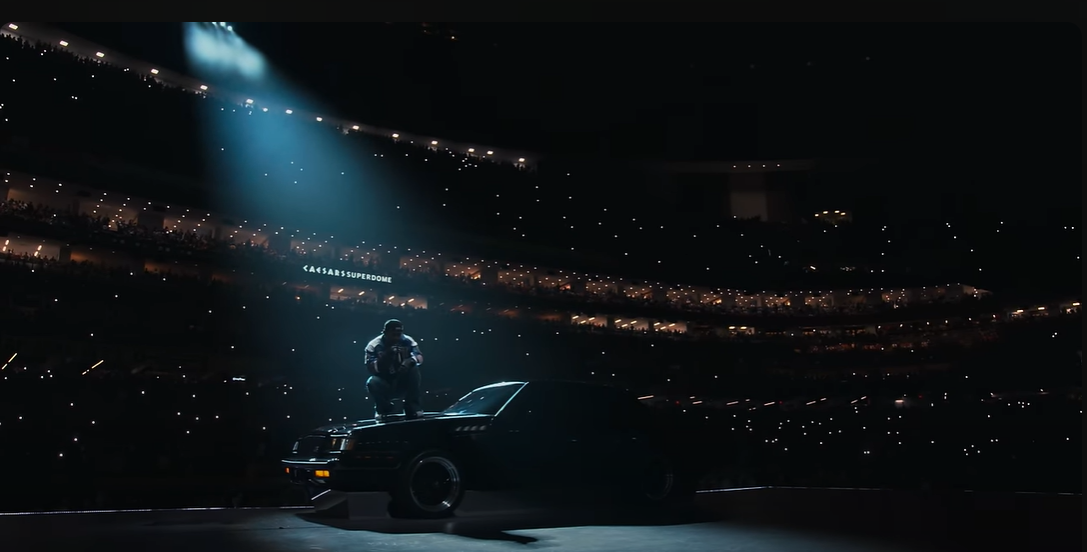Kendrick Lamar: Superbowl showtime Implications
Kendrick Lamar’s Super Bowl Performance: A
Cultural Masterpiece of Art, Activism, and Unity
Kendrick Lamar has once again proven why he is one of the most important artists of our time. His Super Bowl LIX halftime performance was not just a musical spectacle but a statement—one that blended artistic vision, cultural symbolism, and lyrical brilliance to make a lasting impact on both hip-hop and American society. In this blog, we’ll dive into the implications of his performance, explore his artistic inspirations, and analyze how he used his stagecraft and lyrics to deliver a powerful message about unity and identity.
The Artistic Vision: More Than Just a Show
Lamar’s Super Bowl performance was meticulously curated to communicate messages that extended beyond entertainment. The show opened with Samuel L. Jackson embodying Uncle Sam, setting the tone for a critical reflection on American society. This satirical yet profound moment highlighted Lamar’s ongoing theme of questioning power structures and the lived experiences of Black Americans.
Visually, the performance was stunning. A standout moment was when dancers arranged themselves into a fractured American flag during HUMBLE., symbolizing the nation’s ongoing struggles with division and inequality. Such powerful imagery reinforced the urgency of Lamar’s message—hip-hop as a vehicle for protest and awareness.
(Source: The Atlantic)
Inspirations and Cultural Significance
Lamar’s work has always been deeply rooted in the culture and history of Black America, and his halftime performance was no exception. The inclusion of Serena Williams performing the Crip Walk was a nod to his West Coast heritage and a moment of cultural reclamation. What has often been viewed as a controversial dance was here repurposed to celebrate Black excellence and resilience, challenging mainstream narratives that stigmatize certain cultural expressions.
Another profound reference was his allusion to the historical phrase “40 acres and a mule,” an unfulfilled promise of reparations made to freed slaves. By invoking this in a performance seen by millions, Lamar forced viewers to confront the lasting effects of racial injustice and economic disparity in the U.S.
(Source: AP News)
Stagecraft and Strategic Lyricism
Lamar’s ability to weave his lyrical themes into live performances is what sets him apart. His performance of Not Like Us, a song that has sparked conversations due to its criticisms of rapper Drake, was an interesting addition. However, for the Super Bowl audience, Lamar strategically altered some of the song’s explicit lyrics, removing inflammatory words while still maintaining its essence. This adaptation demonstrated his understanding of context—balancing artistic expression with mainstream visibility.
Despite its personal undertones, Not Like Us played a larger role in the halftime show’s overarching theme. The song, which many see as a critique of inauthenticity in hip-hop, became a metaphor for broader societal issues—integrity, legacy, and the battle for cultural ownership.
(Source: The Independent)
The Symbolism of the 1987 Buick GNX
One of the most talked-about elements of Lamar’s performance was the inclusion of a 1987 Buick GNX. This car holds deep significance, both personally and symbolically. Lamar was born in 1987, the same year this high-performance vehicle was produced, and his father drove him home from the hospital in a Buick Regal, the base model for the GNX. This car, therefore, represents a full-circle moment in his life and artistic journey.
Beyond personal ties, the GNX’s legacy as an underdog that outperformed the Ferrari F40 in quarter-mile tests carries a powerful metaphor. Just as the GNX defied expectations and beat a luxury sports car, Lamar’s presence in hip-hop has been one of surpassing industry elites and proving his dominance. Some commentators even linked the GNX’s racing triumph to Lamar’s victory over Drake in their ongoing rap feud, reinforcing his position as a formidable force in the industry.
(Source: Motor Authority)
The GNX was not just a static prop; it was incorporated into the performance, with Lamar and his dancers emerging from the vehicle. Positioned on a stage designed to resemble a PlayStation controller, the car became a representation of Lamar’s journey through the "American dream"—a game where he controls his own destiny.
(Source: Wired)
Why This Performance Matters
Lamar’s Super Bowl halftime show wasn’t just a moment in music history; it was a moment in cultural history. His ability to translate deeply personal and political messages into a stadium-sized performance speaks to his power as an artist and storyteller. In a time where division is rampant, Lamar reminded us that music—when used with intention—can be a force for unity, dialogue, and change.
From his sharp stagecraft to his carefully curated lyrical choices, Lamar’s performance will be remembered as one of the most significant in Super Bowl history. It was a testament to the power of hip-hop, the importance of cultural storytelling, and the enduring impact of an artist willing to challenge the status quo.
What are your thoughts on Kendrick Lamar’s Super Bowl performance? Did it resonate with you on a deeper level? Let’s continue the conversation in the comments below!


Comments
Post a Comment